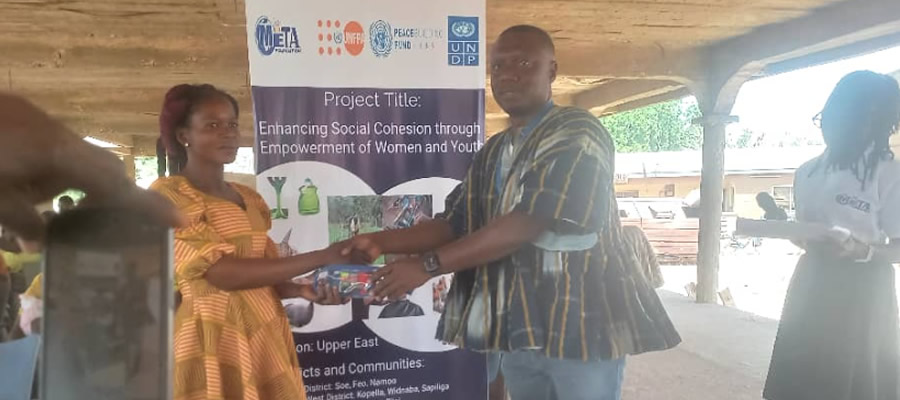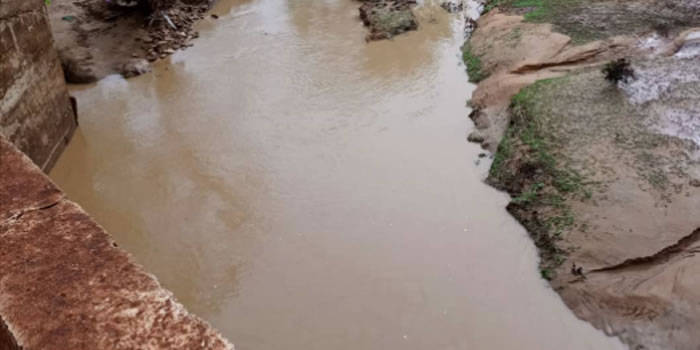

Financial institutions
Bongo District is predominantly composed of subsistence farmers. Incomes of the people fall below the poverty line. The main issue confronting the district Assembly is the low revenue generation. The revenue Heads in the district comprises Rates, lands, Fees and fines, licenses and Rent. To ensure that stakeholders involve in paying the revenue are not overburden, the Assembly in conjunction with Government Accountability Improves Trust (GAIT) an NGO has instituted a consultative forum where stakeholders and the revenue authorities dialogue and negotiate to inveterate acceptable to both parties. The fee fixing then goes through the relevant committees of the Assembly before the General House gives its approval.
The final document becomes a legal and dinging. In order to ensure that the Assembly exercises prudent financial management, the commissioned collectors are trained periodically to help improve revenue generation. A tasks force has been put in place which visits the various revenue check points to ensure that approved rates are paid and collected. An Innovation Team (1 Team) on revenue generation has been constitute in the district. This team compliments the efforts of the commissioned collectors and the task force.
Source Revenue
The source of revenue for the Assembly is categorized into 3. Grants from central government, Internally Generated Fund, and diner funds. Among the sources, the major contributor to the District Assembly is the gouts from central Government which constitute 67.2% of the total inflow from 2003 to 2005. The donor finds constituted 28.4% whiles the internally Generated funds was only 4.4% the graph below give the percentage inflow of finds from the various sources. The table below also shows in absolute terms the quantum of finds generated from the sources. The graph below shows the comparison between estimated and actual revenue for IGF for the period 2003-2005.
IGF Performance
In 2003, it was estimated that Assembly will generate revenue from IGF to the tone of $524,650,000 which constituted about 3% of the total inflow as projected. In 2005, the total projected IGF revenue for the period was 8, 84,030,000 which constitute only 4% of the projected revenue for the period. However actual revenue received during the period. Was $450,711,800 which accounted for 3% of the total revenue variance of <t47,849,450 in 2003 and a negative variances of (433,318,200). Between 2003 and 2005, the Assembly’s Internally Generated Revenue reduced by about 27%. This situation does not augur well for effective development since the over reliance on the central Government and devotement partners has its own problem.
Central Government Grants
Fiscal decentralization to the district remains one of the major features of decentralization process in Ghana. The only major source Central Government Grant to the District Assemblies is the District Assemblies Common Fund. Recently another source of central government grant is the HIPC Relief Fund. The expenditure heads of the Assembly have been categorized into four broad sectors, namely Administration, Education, Health and water and Sanitation. The table below shows expenditure for the various sectors
The table above shows various sectors and the proportion of budget spent on each sector. It can be deduced from the table that 38.2% of the total expenditure on education. The expenditure was spent on physical infrastructure ie. Construction and renovation of classroom blocks, teacher’s quarters, supply of furniture for both pupils and teachers. The expenditure also includes sponsorship for Teacher trainees, tertiary students and second cycle students. Expenditure on administration over the 3-year period constitutes 29.3% of the total expenditure
Financial Management
The District Assembly uses its resources judiciously in order to get value for money. The funds generated locally and those received as grants are lodged at the Bank. The collections are entered into cash books and ledgers at the finance department of the District Assembly prior to Banking. With receipt like District Assembly Common Fund, the monies are deposited in the appropriate Bank Account of the District Assembly by the institute disbursing the funds and later advised accordingly.
Funds meant for Development projects are lodged at the Bank. However, the District Assembly keeps some liquidity in order to transact day-to- day administration business. This cash in hand is normally petty and is mainly from the locally generated revenue. Management is guided by monthly trail balances that show the actual expenditure and receipts in the month of and the cumulative figures as at the end of the period under consideration.
Funds Disbursement
The District Assembly disburses funds in accordance with the lay down regulations. Foremost, the District Assembly would disburse funds on items captioned in the approved estimates. These items would either be recurrent or capital.
Current Expenditure
Recurrent Expenditure is on items such as traveling and transports, general expenditure that included purchase of stationary, fuel, minor repairs of vehicles among others. The procurement of these items does not go the Tender Committee. The District Assembly carries out expenditure by picking three invoices from three suppliers and the least cost items are procured to ensure value for money.
Stores
All items purchased are received on charge by the Store Keeper and subsequently released for use. Tally Cards and inventories are kept to monitor the use of the stores. Also, requisition are made on items prior to their release from stores.
Capital Expenditure
The district Assembly Advertise projects to be executed and receives bids up to a specified date. The bids are opened thereafter in the presence of bidders to ensure bids were not tempered with. The opened bids are evaluated by an Evaluation Panel constituted by the District Chief Executive. The most responsive bidder wins the contract. There is transparency normally at all levels of the process. Payments for projects are made upon satisfactory discharge of work to the contractor. This normally done through the consultants raising a certificate for the level of work done.
The DPCU issues inspection report and a Warrant for authorization by the District Chief Executive and approval by the District Co-ordinating Director for the Finance Officer to effect payment from a specified account. The District Assembly approves the disbursement of funds by the decentralized departments It ensures that the disbursement conforms to the budgetary allocation and funds are available and that the goods and services being procured have been supplied.
Payroll Management
To ensure that staffs of the District Assembly are the ones being paid their remunerations in the form of salaries, a comprehensive list of personnel of the District Assembly is maintained. This list is used to crosscheck all payment vouchers from the Controller and Accountant General’s Department, Accra. For the purpose of effectiveness, the spending officers and their accountants have been charged to perform this role. Where is there is no evidence of ghost names, the payment vouchers is duly signed by the spending officer and copies returned to Accra for further action.
Date Created : 11/18/2017 6:35:00 AM











 facebook
facebook
 twitter
twitter
 Youtube
Youtube
 +233 593 831 280
+233 593 831 280 0800 430 430
0800 430 430 GPS: GE-231-4383
GPS: GE-231-4383 info@ghanadistricts.com
info@ghanadistricts.com Box GP1044, Accra, Ghana
Box GP1044, Accra, Ghana